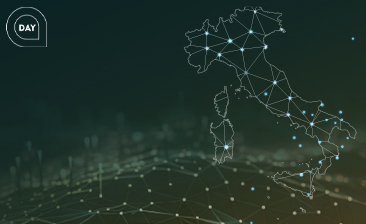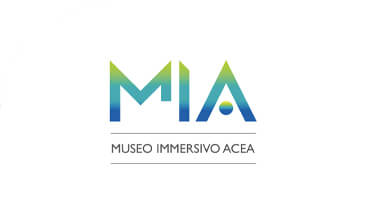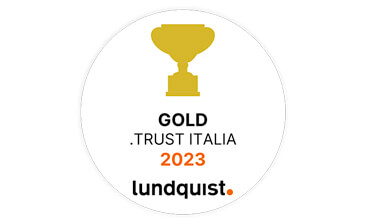
Acea for World Energy Saving Day
The blockchain (or distributed ledger technology) is an open ledger that allows for secure storage transactions and data in a distributed network of computers without central organisations in charge of their control.
So what is a blockchain and how does it work? The blockchain can be defined as a particular type of database shared between the nodes of a network of computers that stores information by organising it into blocks, i.e. interconnected storage units.
The blockchain, therefore, can be viewed as an unlimited and decentralised series of notary deeds managed in a public, immutable and distributed register. There, the transactions are encrypted and grouped into blocks which are then added to the existing chain.
Blockchain technology has been introduced into the financial sector as infrastructure for cryptocurrencies. However, it is also being used more and more in non financial sectors such as healthcare, real estate, commodity supply chain and energy.
How is blockchain technology applied to the electricity market?
Blockchain technology is receiving a lot of attention in the energy sector for its ability to provide innovative and efficient solutions. In particular, the blockchain can be used to improve the transparency, reliability and security of energy transactions.
In relation to blockchain projects, one of the first applications in the energy field was developed by a group of people and small companies in New York through the Brooklyn Microgrid project. The system that underpins this project has made it possible for the residents of the neighbourhood to exchange electricity produced locally through solar panels. Thanks to the use of intelligent detectors, this system is able to constantly measure generated energy and consumed energy.
In the energy sector, the blockchain is able to record the operations relating to the production, transmission, distribution and sale of energy, as well as the data flows required to manage flexibility markets. For instance, distributed ledger technology allows a citizen with a home equipped with a system for producing electricity such as solar panels, not only to use the energy produced for own consumption but also to accumulate or resell the excess, thus becoming a supplier of electricity and flexibility services. This can be done autonomously thanks to blockchain technology which is able to manage the transactions related to the exchange of energy between different users and the network.
The blockchain applied to the energy sector makes it possible to simplify the purchase and sale of energy. The price at which to buy or sell energy can be decided in real time on the basis of the supply and the demand. The transparency of energy transactions is guaranteed by the immutability of the blockchain technology.
The application of blockchain technology in the energy sector has many advantages, first among them the active consumer participation in the energy market and in the flexibility services market.
In addition, the technology incentivises more efficient consumption control and a constant monitoring of possible network issues. In a traditional configuration, in the event of energy overproduction, the plants are not always able to efficiently manage the excess energy. The blockchain can provide support in redistributing the energy surplus by guaranteeing a constant balance between supply and demand for the benefit of the entire community and ensuring the energy flexibility of the entire system.
There are considerable advantages also from an environmental perspective:
The PlatOne (PLATform for Operation of distribution Networks) consortium ranks among the main European blockchain projects engaged in the experimentation of Europe’s first smart electricity grid. Through the use of the blockchain, the goal of the project is to change the way consumption is managed by guaranteeing network stability, incentivising the increase in the use of renewable energy sources and accelerating the energy transition. PlatOne was built up as a response to the challenge launched by the European Union to mitigate grid congestion caused by the growing penetration of electricity from variable generation renewable sources and from heating, cooling and electric mobility systems. Furthermore, it aims to create a highly inclusive flexibility market which enables all users to offer ancillary services to electricity grids. The Italian pilot is led by Areti, the Acea Group company that deals with the modernisation and development of electricity infrastructures and manages distribution, public, artistic and cemetery lighting services in Rome and Formello.
Through the European project PlatOne, Areti is already engaged in the development of solutions to favour the flexibility of its distribution network by means of its digitisation. In fact, in Rome tests are currently underway in some neighbourhoods and now, with RomeFlex (Reshaping Operational MEthods to run grid FLEXibility), the project extends to the entire city with the aim of creating a local market of energy flexibility. This can be done by ntroducing a new grid management approach at national level and providing a significant contribution in controlling the consumption peaks that characterise the energy market in Rome.
In particular, RomeFlex and PlatOne use two types of blockchain:
The two projects use a device (Light-Node for PlatOne and PGUI for RomeFlex) which allows to collect the measurements provided by the smart-meter, even in real time, and to acquire flexibility service activation signals and certify them via blockchain. This certified data are then used to verify the actual service delivered and the related payment.
With the development of ever more efficient functions and with the involvement of an increasing number of users, the RomeFlex project aims to optimise network operation making it more resilient and stable. It also allows the distributor to play the role of facilitator of the energy transition and of enabler of the flexibility market, allowing all users, residential and industrial, to provide flexibility services to electricity grids.
Discover the latest news and initiatives of the Acea Group

Acea for World Energy Saving Day

Visit the virtual museum about the history of the Acea Group

The channel for the commercial requests on land urbanisation

Acea turns the spotlight on the Rome Film Festival 2023

Acea is in the "Gold class" in the .trust research

Read more about our culture of inclusiveness